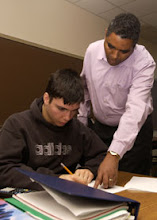By kay.e.strong
Syfy is often a bell-weather of the future—a point I like to make when talking with young people who are interested in the possibilities of the future. Take for example, the 1950 movie Destination Moon, a sy-fy film focused on realistically detailing such a trip. What makes this film all the more intriguing is that it appeared seven years before Sputnik’s launch! And beyond that, Sergei Korolev would not make his proposal for an orbiting satellite to the Soviet Ministry of Defense until 1954. The film posited as futuristic: realistic spaceflight, commercial interest in space and nuke-powered rockets.
Syfy is often a bell-weather of the future—a point I like to make when talking with young people who are interested in the possibilities of the future. Take for example, the 1950 movie Destination Moon, a sy-fy film focused on realistically detailing such a trip. What makes this film all the more intriguing is that it appeared seven years before Sputnik’s launch! And beyond that, Sergei Korolev would not make his proposal for an orbiting satellite to the Soviet Ministry of Defense until 1954. The film posited as futuristic: realistic spaceflight, commercial interest in space and nuke-powered rockets.
Likewise, elements suggestive of today’s reality television first popped in sy-fy. Ray Bradbury’s 1953 novel Fahrenheit 451 portrayed live audience participation programming. The Running Man (1987), a loose rendition of Stephen King’s dystopian novel, is a television show about criminals who are released to out run publically-sanctioned professional killers. Twelve years later (1998) the entire life of an insurance salesman aired as The Truman Show. Reality TV exploded…Big Brother, Survivor, American Idol...
As a genre reality television supposedly captures unscripted situations featuring ordinary people jockeying for the public’s eye. It exploits sensationalism, or better, a highly-modified form of reality, to attract viewership and generate sponsorship. Story editors coach participants into staging the desired illusion of reality. When that fails, post-production editing kicks in, gleaning the choicest event, the optimal word, the most suggestive expression. By mismatching audio and video from different footages of film, an altered chronology is proffered as reality.
If you have been alert, you’ve probably figured out that I’m no longer wandering the world of science fiction but rather life itself. Specifically, that pseudo-reality drama called American politics in which life emulates science fiction emulating life!
Take 1: Romney’s campaign pounces on Gingrich with a hashtag, “#grandiosenewt” that runs a news cycle ridiculing Gingrich. If sensationalizing minutiae is the goal, then Twitter is an elegant pimping tool for retail politics.
Take 2: Gingrich’s one-minute post-production video haranguing Romney on dishonesty drew an immediate disclaimer from Huckabee.
“Any use of an out-of-context quote from the Republican presidential primary four years ago in a political ad to advocate for the election or defeat of another candidate is not authorized, approved, or known in advance by me.”
I never liked Reality TV. I like reality TV politics even less. Why? Maybe, because it hits too close to the truth about how shallow the American psyche really is. And, sadly, no matter how many times I punch the “off” on my reality remote it refuses to shutdown. So I'm locked into a neverending loop of life emulating the worst of sy-fy!
 Kay Strong, Ph.D., Southern Illinois University, M.T., University of Houston, M.A., Ohio University; Associate Professor at Baldwin-Wallace College; Areas of expertise: international economics, contemporary social-economic issues, complexity and futures-based perspectives in economics. E-mail: kstrong@bw.edu
Kay Strong, Ph.D., Southern Illinois University, M.T., University of Houston, M.A., Ohio University; Associate Professor at Baldwin-Wallace College; Areas of expertise: international economics, contemporary social-economic issues, complexity and futures-based perspectives in economics. E-mail: kstrong@bw.edu

